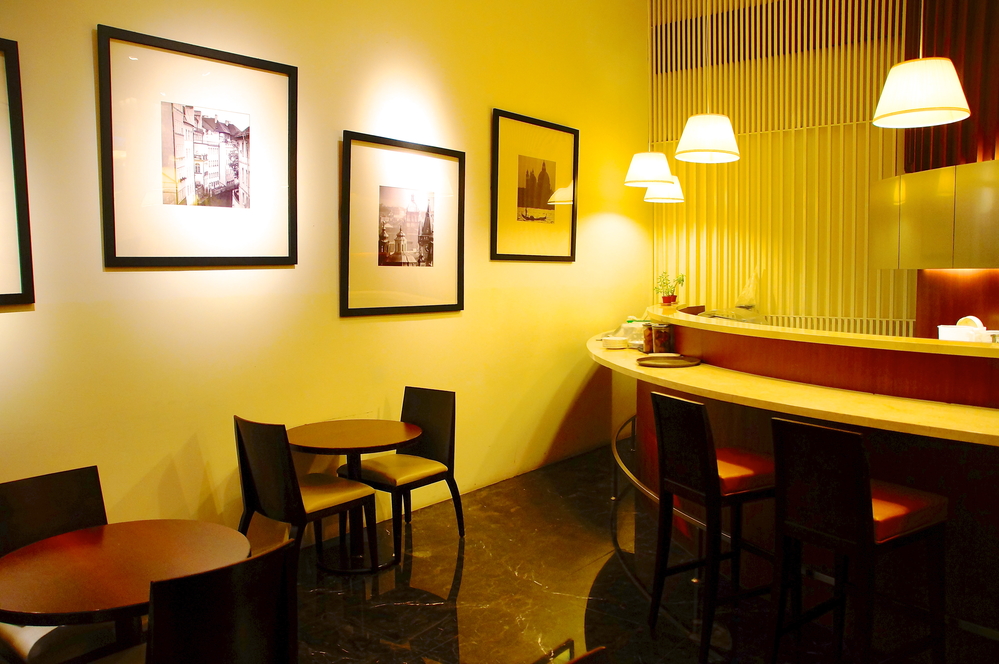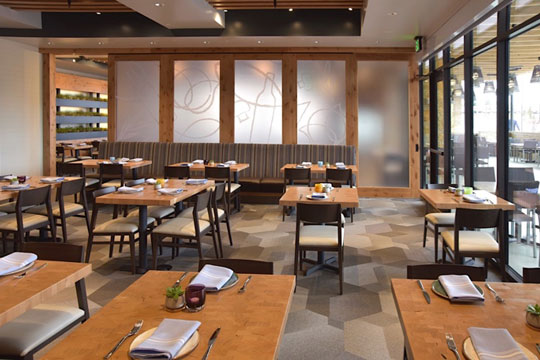Chinese Food Islamabad: Appreciate Authentic Chinese Food at its Best
Chinese Food Islamabad: Appreciate Authentic Chinese Food at its Best
Blog Article
Savor Genuine Eastern Cuisine With a Pan-Asian Twist for a Culinary Adventure
Beginning on a cooking trip through authentic Eastern food, boosted with a Pan-Asian spin, uses an unique opportunity to explore the rich tapestry of tastes that define the region's diverse culinary traditions. As you contemplate these enticing meals, take into consideration the social narratives and historical impacts that form them, each bite providing a tale waiting to be found. Best ambiance restaurants Islamabad.

Checking Out Pan-Asian Flavors
In the world of global gastronomy, Pan-Asian food stands out for its amazing diversity and the unified interaction of tastes from different Oriental cultures. This culinary approach celebrates the unique active ingredients and abundant traditions discovered across the continent, creating a tapestry of preferences that is both enjoyable and fascinating. Key to Pan-Asian cuisine is its ability to balance different flavors-- sweet, salted, spicy, and sour-- while highlighting the freshness and quality of each component.
From the umami-rich soy sauce of Japan to the fiery chili peppers of Thailand, Pan-Asian cuisine offers a substantial combination of flavors. These components are usually integrated in inventive methods, boosting dishes with layers of complexity. As an example, using aromatic herbs such as lemongrass and cilantro, typical in Vietnamese and Thai food, includes a revitalizing brightness to meals, while the unification of coconut milk delivers a luscious, rich structure.
The emphasis on fresh fruit and vegetables and aromatic seasonings ensures that each dish is not only a feast for the taste but additionally for the senses. Pan-Asian food invites diners to start a culinary trip, exploring the vast and varied landscapes of Asian gastronomy with every bite.
Fusion Meals to Try
While Pan-Asian food is commemorated for its standard flavors, the contemporary culinary landscape is progressively embracing blend recipes that blend these classic elements with impacts from other areas. This ingenious method not only honors the rich heritage of Eastern cookeries yet also presents novel taste experiences that appeal to modern tastes.
A prime example of such a combination recipe is the Korean-Mexican taco, where marinated bulgogi beef is covered in a cozy tortilla, topped with kimchi and a hot gochujang-infused salsa. This mix weds the strong, tasty tastes of Korea with the dynamic, fresh aspects of Mexican cuisine. In a similar way, sushi burritos have gotten popularity, integrating the fragile artistry of Japanese sushi with the passionate, hand-held convenience of a burrito, typically featuring fusion components like tempura shrimp and avocado with a drizzle of wasabi mayo.
One more significant dish is Thai curry ramen, which infuses the creamy, aromatic spices of Thai curry into the soothing broth of conventional Japanese ramen, developing an unified mix that tantalizes the detects. These blend recipes expand past plain uniqueness; they stand for a culinary dialogue in between societies, motivating expedition and innovation worldwide of Pan-Asian cuisine.
Important Components and Seasonings
To absolutely appreciate Pan-Asian food, one have to recognize the vital ingredients and flavors that create its foundation. This diverse cooking style attracts from a rich tapestry of Asian customs, using a harmonious blend of textures and flavors.
Aromatic components are crucial, with ginger, garlic, and lemongrass being common throughout numerous Pan-Asian recipes. These active ingredients supply an aromatic base that enhances the intricacy of tastes. Flavors such as star anise, cardamom, and cinnamon present heat and character, resembling influences from regions like China and India.

Cooking Strategies and Tips
Mastering the art of Pan-Asian cuisine requires knowledge with its distinct cooking methods, each adding to the dynamic tapestry of flavors this culinary custom is celebrated for. Central to these approaches is the view publisher site stir-fry, a rapid cooking strategy that preserves the dietary honesty and vibrant colors of ingredients. Using a frying pan, the stir-fry method permits also warmth circulation, crucial for achieving the characteristic appearance and taste equilibrium of Pan-Asian recipes.
An additional basic technique is steaming, especially widespread in Chinese cuisine. This gentle technique maintains the natural tastes and nutrients of ingredients, making it ideal for seafood and vegetables. Dumplings, a beloved staple, usually gain from steaming, causing soft, succulent appearances.
Grilling, also integral, imparts smoky depths to meals such as Oriental bulgogi or Japanese yakitori (Best ambiance restaurants Islamabad). This technique usually includes marinating ingredients, permitting tastes to pass through deeply before cooking over an open flame or warmer
Finally, understanding the art of balancing tastes-- sweet, sour, salty, bitter, and umami-- is essential. Appropriately layering these aspects can boost a dish from common to phenomenal, using a facility and pleasing culinary experience that symbolizes the essence of Pan-Asian food.
Eating Experiences Worldwide
Around the world, Pan-Asian cuisine offers an exceptional dining experience, celebrated for its abundant tapestry of tastes and lively presentations. This cooking phenomenon has actually gone beyond cultural limits, recording the hearts and tastes of food fanatics worldwide. In multicultural cities like New York, London, and Sydney, Pan-Asian restaurants work as fusions where cooking practices from Thailand, Japan, China, and beyond merge, providing restaurants with a diverse mix of dishes that highlight the area's variety.
The worldwide charm of Pan-Asian cuisine exists in its capacity to provide both credibility and technology. Chefs masterfully marry traditional components such as lemongrass, Visit Your URL soy sauce, and miso with modern techniques, resulting in dishes that are both familiar and refreshingly brand-new. This fusion allows diners to start a culinary journey that respects heritage while welcoming modernity.
In addition, dining experiences are boosted through attentively created environments that reflect the principles of Pan-Asian visual appeals. From minimalist Japanese-inspired interiors to lively Thai-themed spaces, each restaurant supplies a special setting that matches the culinary offerings. Consequently, customers are not simply taking in a meal however partaking in a cultural experience, making Pan-Asian dining a genuinely global phenomenon.
Conclusion
The exploration of Pan-Asian cuisine offers an extensive understanding of the elaborate interaction of flavors and culinary customs throughout Asia. By accepting fusion dishes such look at more info as Thai curry ramen and sushi burritos, the culinary trip not only highlights the flexibility of conventional active ingredients yet also showcases ingenious modern-day techniques. This gastronomic journey, enhanced by cooking methods and important spices, supplies an one-of-a-kind chance to appreciate the cultural variety and cooking artistry that specify Pan-Asian food on an international scale.
Beginning on a culinary journey via authentic Oriental food, enhanced with a Pan-Asian spin, uses an unique chance to check out the abundant tapestry of flavors that specify the region's varied culinary practices.In the world of international gastronomy, Pan-Asian cuisine stands out for its remarkable diversity and the unified interaction of tastes from numerous Eastern societies. Key to Pan-Asian food is its capacity to stabilize contrasting flavors-- wonderful, salty, spicy, and sour-- while highlighting the quality and top quality of each component.

Report this page